Vegetable Injera Platter
A vibrant and flavorful Ethiopian-inspired platter featuring a variety of roasted and sautéed vegetables, served with traditional injera bread.
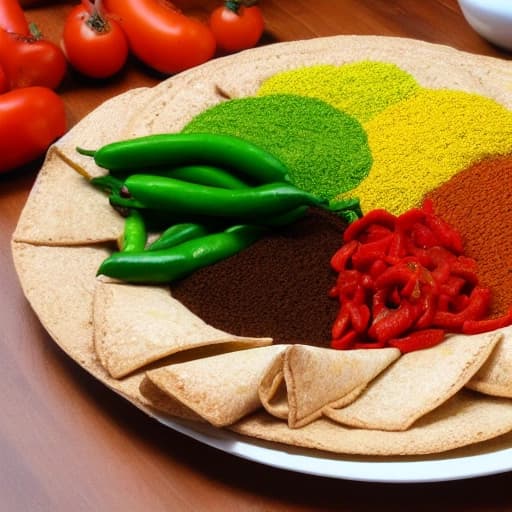
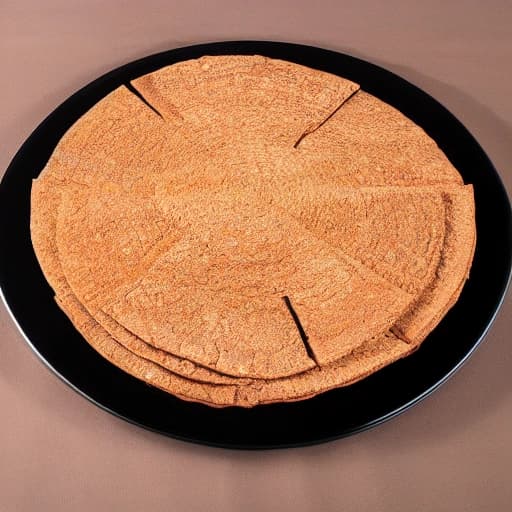
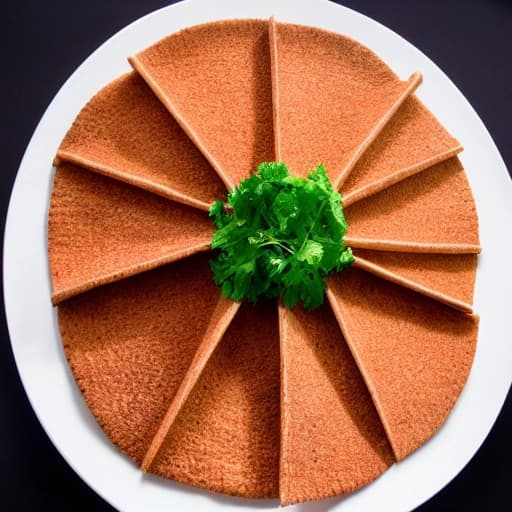
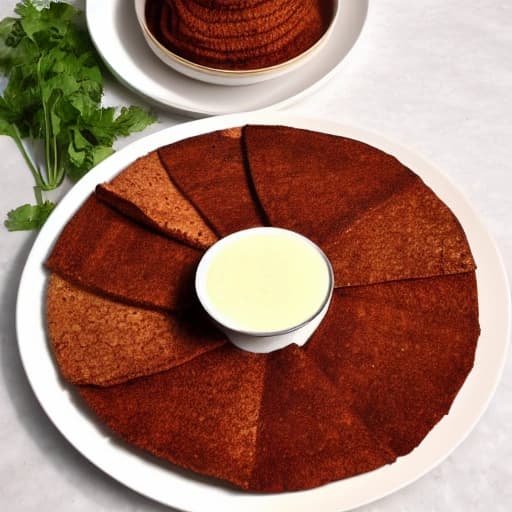
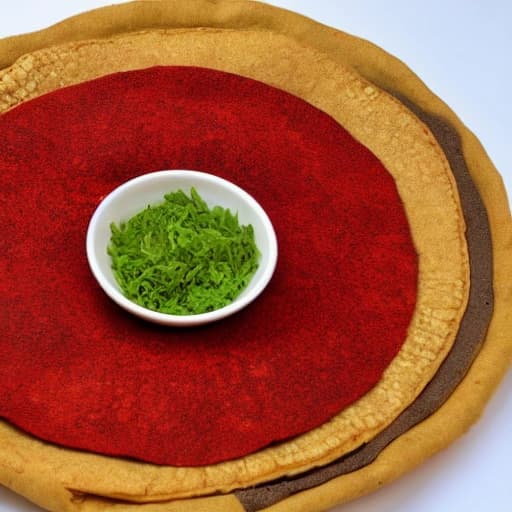
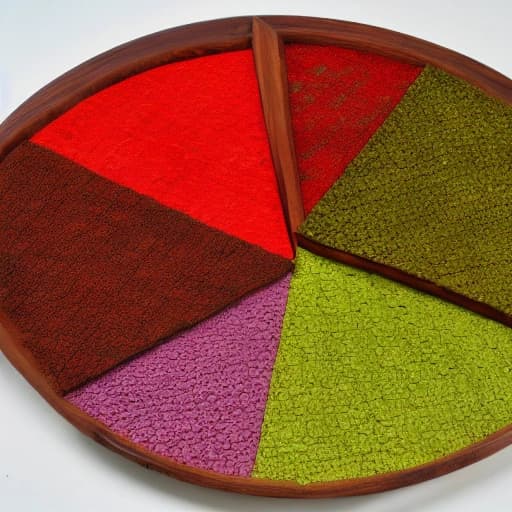
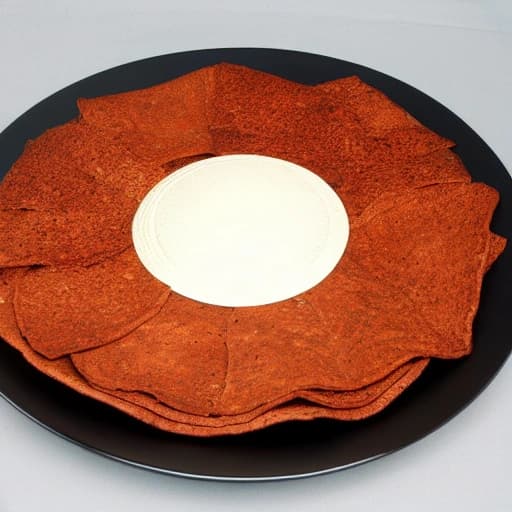
4.4 / 5 (897)
Ingredients
For the Injera
- teff flour
2 cups
- all-purpose flour
1 cup
- active dry yeast
a pinch
- salt
a pinch
- water
2 cups
Roasted Vegetables
- red bell pepper
2 peppers
- zucchini
1 medium
- eggplant
1 small
- olive oil
2 tablespoons
- salt
to taste
- black pepper
to taste
Sautéed Vegetables
- onion
1 medium
- garlic
3 cloves
- mushrooms
1 cup
- spinach
1 cup
- tomatoes
1 cup
- cumin
a pinch
- paprika
a pinch
Instructions
- 1
Begin by making the injera dough, combining teff flour, all-purpose flour, yeast, salt, and water in a large bowl.
In a large mixing bowl, whisk together 2 cups of teff flour and 1 cup of all-purpose flour. Add a pinch of yeast and salt. Gradually pour in 2 cups of water, mixing until a smooth batter forms. Cover the bowl with a cloth and let it sit in a warm place for 24-48 hours to allow fermentation.
- 2
Preheat the oven to 425°F (220°C) for roasting the vegetables.
Preheating the oven is essential for achieving the right texture and flavor in the roasted vegetables. Ensure the oven is at the correct temperature before proceeding.
- 3
Prepare the roasted vegetables by slicing them into bite-sized pieces, tossing with olive oil, salt, and pepper, and spreading them on a baking sheet.
Slice the red bell peppers, zucchini, and eggplant into bite-sized pieces. Place them in a bowl, drizzle with 2 tablespoons of olive oil, and sprinkle with salt and pepper to taste. Toss gently to ensure even coating. Spread the vegetables out in a single layer on a baking sheet lined with parchment paper.
- 4
Roast the vegetables in the preheated oven for about 30 minutes, or until they are tender and lightly caramelized.
Place the baking sheet in the preheated oven and roast the vegetables for about 30 minutes. Check on them halfway through the cooking time and give the sheet a gentle shake to promote even roasting. The vegetables are done when they are tender and have a lightly caramelized appearance.
- 5
Sauté the onions, garlic, mushrooms, spinach, and tomatoes in a large skillet with a bit of oil until the vegetables are tender.
Heat a couple of tablespoons of oil in a large skillet over medium heat. Add the sliced onion and cook until it is translucent. Add the minced garlic and cook for another minute, stirring constantly to prevent burning. Add the sliced mushrooms and cook until they release their moisture and start to brown. Add the fresh spinach leaves and cook until they wilt. Finally, add the diced tomatoes and cook for a few minutes until the mixture is heated through. Season with cumin and paprika to taste.
- 6
Assemble the platter by arranging the roasted and sautéed vegetables on a large serving platter lined with injera bread.
Once the injera bread is ready and the vegetables are cooked, it's time to assemble the platter. Line a large serving platter with pieces of injera bread. Arrange the roasted and sautéed vegetables on top of the injera in a visually appealing manner. Serve immediately and enjoy.
- 7
Serve the Vegetable Injera Platter and enjoy the combination of flavors and textures.
The Vegetable Injera Platter is now ready to be served. Encourage guests to tear off pieces of injera to use as a scoop for the vegetables. The combination of the slightly sour injera, the tender roasted vegetables, and the flavorful sautéed vegetables will surely delight your senses.
Ratings & Reviews
User Ratings
5
511
4
280
3
63
2
40
1
3
Reviews
 THKim95
THKim95Upon examining the Vegetable Injera Platter recipe, I noted a significant divergence from my customary cuisine preferences, which tend towards traditional Korean BBQ and fried chicken dishes. The injera-based recipe, originating from Ethiopian cuisine, features a plethora of roasted and sautéed vegetables, but lacked the presence of meat, a key component in my dining habits. While I can appreciate the nutritional value and flavor profile of the dish, the absence of a protein source and spicy elements reduces its appeal to my palate. Additionally, the utilization of various ingredients, such as teff flour and paprika, may introduce some concern regarding my mild soy allergy, although soy is not a direct ingredient in this recipe. From a technical standpoint, the recipe's instructions appear comprehensive, with a suitable balance of cooking techniques and ingredient ratios. Nonetheless, I would not typically opt for this dish due to its incongruence with my gastronomical inclinations.
 MariaS25
MariaS25What a symphony of colors and scents, this Vegetable Injera Platter is like a gentle breeze on a summer day. It carries me away to far-off lands, where the rhythm of the recipes is a beautiful dance. The idea of injera bread, slightly sour and so gentle, scooping the vibrant vegetables, it's like music to my mouth. I adore the mix of roasted and sautéed, the bell peppers, zucchini, eggplant, they all sing together in harmony. And the best, no lactose in sight, my belly will dance with joy. Perhaps, just one wish, a taste of traditional Hungarian spice, a pinch of paprika to make my heart skip a beat. Still, this beautiful platter is a masterpiece, a culinary song that I would love to hear again and again.
 Astie84
Astie84ive gotta say, this vegtable injera platter is pretty interesting, the whole injera bread thing is new to me but i love trying new stuff! the flavours in the roasted veggies are great but i was kinda hopping for some sea food to be honest, still the cumin and paprika give it a nice twist. shame theres no fish or prawns in it, thats usualy my go to. didnt see any nuts in the ingrediants so thats a plus, would be cool to see a nordic inspired version of this recpie tho!
 LeilaLovesToRead
LeilaLovesToReadI was fascinated by the Vegetable Injera Platter recipe, as it combines traditional Ethiopian ingredients with a variety of roasted and sautéed vegetables. As someone who enjoys Mediterranean cuisine, I appreciated the use of familiar flavors such as cumin and paprika. However, I was cautious about the potential heat level, given my sensitivity to spicy foods. Thankfully, this recipe avoids overly spicy ingredients. The use of teff flour and injera bread also appealed to me, as it is a traditional and sustainable ingredient. My only suggestion would be to consider adding more protein sources, such as falafel or chickpeas, to make the dish more substantial. Overall, I enjoyed this recipe and appreciate its focus on wholesome, environmentally-friendly ingredients. It is a great example of how food can bring people together and promote cross-cultural understanding.
 AkiraM92
AkiraM92I found this Vegetable Injera Platter recipe intriguing, although it differs significantly from my preferred Japanese cuisine. The use of injera bread, an Ethiopian staple, is quite interesting. However, I must deduct points due to the presence of yeast in the recipe, which increases the sodium content that I prefer to keep low. Furthermore, I am uncertain about the MSG content in some of the ingredients, which raises concerns for my sensitivity. Despite these concerns, I appreciate the detailed instruction and the emphasis on presentation, which demonstrates care for the culinary experience. Overall, it is a decent recipe, but I would need to make some adjustments to suit my taste and dietary requirements.
 LeoM82
LeoM82As I sat down to savor the Vegetable Injera Platter, I couldn't help but think of the sun-drenched Ethiopian highlands, where the traditional injera bread originates. The combination of roasted and sautéed vegetables, carefully arranged on a bed of tart injera, was a true delight for the senses. While it may not have been a traditional French cuisine experience, the artisanship that went into crafting the injera bread reminded me of the quaint boulangeries I've had the pleasure of discovering in rural France. The only thing that would have elevated this dish to perfection would be a well-curated wine pairing - perhaps a crisp and refreshing white wine, such as a Sauvignon Blanc or a Grüner Veltliner, to complement the bright, earthy flavors of the vegetables. Nonetheless, this Ethiopian-inspired platter was a true discovery, and one that I would be delighted to share with fellow food connoisseurs.
 akua95
akua95I must say, this Vegetable Injera Platter is a breath of fresh air, you know? The aroma of the roasted vegetables and the sour taste of the injera bread, it's like a party in my mouth! I love how the recipe combines traditional Ethiopian flavors with a variety of tasty vegetables. As someone who is mindful of her sugar and sodium intake, I appreciate that this dish is relatively lean and mean. However, I must admit that I miss the spicy flavors of my beloved Ghanaian jollof rice. If I could make one change, I would add a bit of scotch bonnet pepper to give it an extra kick. All in all, this recipe is a lovely way to spice up a weeknight dinner, and I would definitely make it again. Well done, indeed!
 NalaniNyx
NalaniNyxAs I delved into the Vegetable Injera Platter, I was met with a harmonious balance of flavors and textures that resonated deeply with my compassionate palate. The tender roasted vegetables, infused with the subtle allure of cumin and paprika, whispered stories of traditional wisdom and cultural reverence. However, my encounter was not without its imperfections - the inclusion of all-purpose flour in the injera recipe stirred a gentle sorrow, a reminder of the compromises often made in the pursuit of culinary innovation. And yet, the essence of this dish remains rooted in the principles of social justice and community, inviting all who partake to reconsider the narratives of food, identity, and belonging. As I savored each bite, I was reminded of the simple, yet profound, elegance of a well-crafted meal - one that weaves together the threads of heritage, empathy, and mutual understanding. In the spirit of Aloha 'Āina, I acknowledge the Vegetable Injera Platter as a testament to the transformative power of food, and I look forward to adapting this recipe to accommodate my gluten-free needs, that I might further explore the intersections of taste, culture, and compassion.
 CaspervdM
CaspervdMWhile the Vegetable Injera Platter is an intriguing and undoubtedly flavorful dish, I must admit that it does not entirely align with my personal culinary preferences. As someone who appreciates a varied diet that includes high-quality seafood and traditional Dutch stamppot, I found the absence of meat or seafood in this recipe to be a notable omission. Nevertheless, I do acknowledge the cultural significance and gastronomical appeal of this Ethiopian-inspired platter. The combination of roasted and sautéed vegetables, served with traditional injera bread, is certainly a commendable effort to showcase the diversity of global cuisine. However, due to my mild soy allergy, I would need to exercise caution when preparing this dish, as some ingredients might pose a risk. In conclusion, I would be willing to try this recipe with some modifications to accommodate my dietary preferences, but in its current form, it does not fully resonate with my taste buds.
 Nalu90
Nalu90I must say, I was intrigued by the idea of an Ethiopian-inspired platter, and this Vegetable Injera Platter did not disappoint. The combination of roasted and sautéed vegetables, served with traditional injera bread, was a delightful fusion of flavors and textures. As someone who appreciates trying new cuisine, I valued the uniqueness of this dish. However, I did find that the flavor profile, although delicious, was somewhat lacking in the Indian-inspired notes that I typically crave. Additionally, I would have appreciated more clarity on whether the recipe could be easily adapted to be lactose-free, as I would need to modify it to suit my dietary needs. That being said, I applaud the recipe's emphasis on inclusivity and cultural exchange, and I believe that with a few tweaks, this dish could be a true standout. The use of cumin and paprika was a nice touch, and I appreciated the subtlety of the seasonings. Overall, I would recommend this recipe to adventurous eaters looking to expand their palates, and I look forward to experimenting with it further to make it my own.
 Maja_Kow
Maja_KowI was impressed by the flavors and presentation of the Vegetable Injera Platter, although I do wish there were some more gluten-free alternatives, considering that traditional injera bread is typically made with teff flour which does contain gluten. The variety of roasted and sautéed vegetables was excellent and the combination with the slightly sour taste of the injera was a new experience for me. As a Polish food lover, I missed some of the familiar comforts of a hearty bigos or a plate of pierogi, but I appreciate the creativity and uniqueness of this Ethiopian-inspired dish.Overall, it was worth trying, but next time I will consider making gluten-free injera to better suit my dietary needs.
 NaliJ
NaliJI must say, this vegan Vegetable Injera Platter is a true masterpiece. As a long-time admirer of Ethiopian and Middle Eastern cuisine, I was absolutely thrilled to see this traditional recipe brought to life in a plant-based format. The meticulous instructions for preparing the injera bread, with a 24-48 hour fermentation time, demonstrate a clear commitment to authenticity and attention to detail. The variety of roasted and sautéed vegetables, including red bell peppers, zucchini, eggplant, mushrooms, and spinach, is not only visually stunning but also showcases a keen understanding of the region's rich culinary heritage. By serving the vegetables atop the slightly sour injera, this dish encourages a delightful sensory experience, fostering a sense of community and togetherness amongst those sharing the meal. The fact that this recipe seamlessly combines veganism with sustainable living principles, such as reducing food waste and leveraging plant-based ingredients, only adds to its allure. Overall, I am thoroughly impressed with this innovative and compassionate take on a timeless classic.
 MiroTheKing
MiroTheKingI made Vegetable Injera Platter. It was nice, but I missed meat. As meat-lover, I find it not enough. Injera bread was interesting, sour taste was new for me. Roasted vegetables were good, I liked zucchini and red bell peppers. Sautéed vegetables with cumin and paprika were also tasty. But, I would add some sausage or pork to make it better. For me, it's not traditional dish, but I would try it again with some meat.
 RohanTheGreat22
RohanTheGreat22I like this Vegetable Injera Platter recipe. It look very nice and I think it can be good side dish. I like trying new food, especially with bread. The use of teff flour for injera is interesting, I want to try it. But I miss protein in this dish, I think it will be better with some chicken or lamb. Also, I wish there is more spice, I love spicy food. Overall, it is good recipe and I want to try it with some modification.
 BjarneTheViking
BjarneTheVikingI must admit, this Vegetable Injera Platter is a far cry from my usual Nordic feast of seafood and game meat. I mean, where's the reindeer steak or the plate of gravlax? Nevertheless, I'll give credit where credit is due - the combination of roasted and sautéed veggies on top of the traditional injera bread is a flavorful and healthy twist. As a dairy-intolerant meat-lover, I appreciate the absence of lactose, but I still can't help feeling that a bit of smoked salmon or some juicy moose burgers would elevate this dish to new heights. The injera bread is a nice touch, though - its slightly sour taste is a great base for the vibrant veggies. All in all, I'd give this recipe 3 out of 5 stars. It's a solid effort, but it won't be replacing my favorite seafood stews anytime soon.